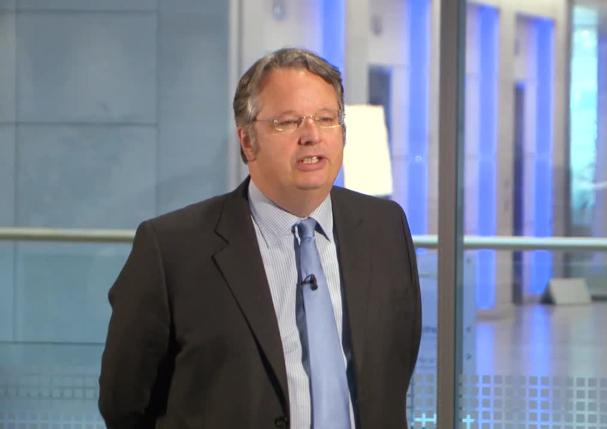How will the potential move away from zero interest rates influence markets? John Stopford, Co-Head of Multi-Asset at Investec Asset Management, gives his view on this interview about the implications for high yield equities, income investors, emerging markets and more.
What has surprised you most in 2014?
One of the things that surprised me most is how much pessimism around the global economy has affected people’s expectations of US interest rate pricing. To our minds, the US economy is diverging, to some extent, from other economies and is creating room for the US to raise interest rates at some point in 2015. However, this has been largely priced out of markets, as markets worry about slowdowns in Europe, China and elsewhere. This has obviously had quite a big impact on bond markets and, to some extent, other asset prices as well.
Should we be concerned about US interest rates in 2015?
We think interest rate developments in the next 12 months are going to be very important. Clearly one of the key drivers of asset markets in recent years has been the very low level of interest rates and the promise by central banks to keep interest rates at low levels for a considerable period. If this driver is beginning to change then investors need to factor that into their investment thinking. We think it is highly likely that the US Federal Reserve will raise rates next year. We also think that this is a fairly significant development that will lead to a pick-up in volatility. It will cause more divergence between US assets and other markets, particularly the dollar, but also bond markets. It will create some noise in equities, although we think that equities should be able to ride through the noise and will be more focused on whether the global economy as a whole is going to expand.
How are you going to be managing your income portfolios?
The best way, we believe, to manage income asset exposure is to take a broad diversified approach. The world of income generation has widened out and it is no longer just a bond story. There are other assets – such as high yielding equities, property and infrastructure – that can provide part of an income solution. All income generating assets these days bring risks with them because all of the safe assets are pretty expensive: cash rates are very low, government bond rates are very low, so if you want to generate more income you have to take more risk. Therefore, to manage that we think you need to strike a balance between opportunity and risk management. One of the easiest ways of managing risk is to diversify and to actively manage the exposure that you take.
What are the biggest risks to these views?
We think there are both upside and downside risks. The main downside risk is the global economy is struggling to grow at a rate that will close output gaps and allow a more normal recovery. This is putting downward pressure on inflation. We may have reached a limit in terms of what monetary policy can do to offset this. There is also the risk that we might be in an uncomfortable economic environment. Asset prices may react badly to this risk, particularly some of the more growth-oriented assets.
But it is also possible that the world is already priced for a pessimistic outcome and potentially there are some upside risks in places like the US where we think growth may turn out to be stronger than people currently think, interest rates may rise somewhat faster than the market is pricing in and this will also potentially have an impact on the absolute relative pricing of assets, such as the dollar, equities, bond yi elds and so on.
How are you positioning your portfolio in terms of strategy?
At the moment our preferred asset class is high yielding equities, which we think are reasonably valued and which we think should benefit from a global expansion that could continue for some years given there are not many pressures on central banks to tighten monetary policy aggressively. We think that against that background earnings can come through, dividends can continue to rise and so equity income should do relatively well.
We are more cautious about high yield and credit in general, as we think this asset class has been the major beneficiary of low interest rates and is now a very crowded trade. It also tends to do less well towards the latter part of an economic cycle and looks reasonably expensive to us. We are underweighting high yield and are more neutral towards some of the other income-generating assets, such as emerging market debt and property, where we think having some exposure makes sense, but perhaps not too much.




 For Fórmate a Fondo
For Fórmate a Fondo